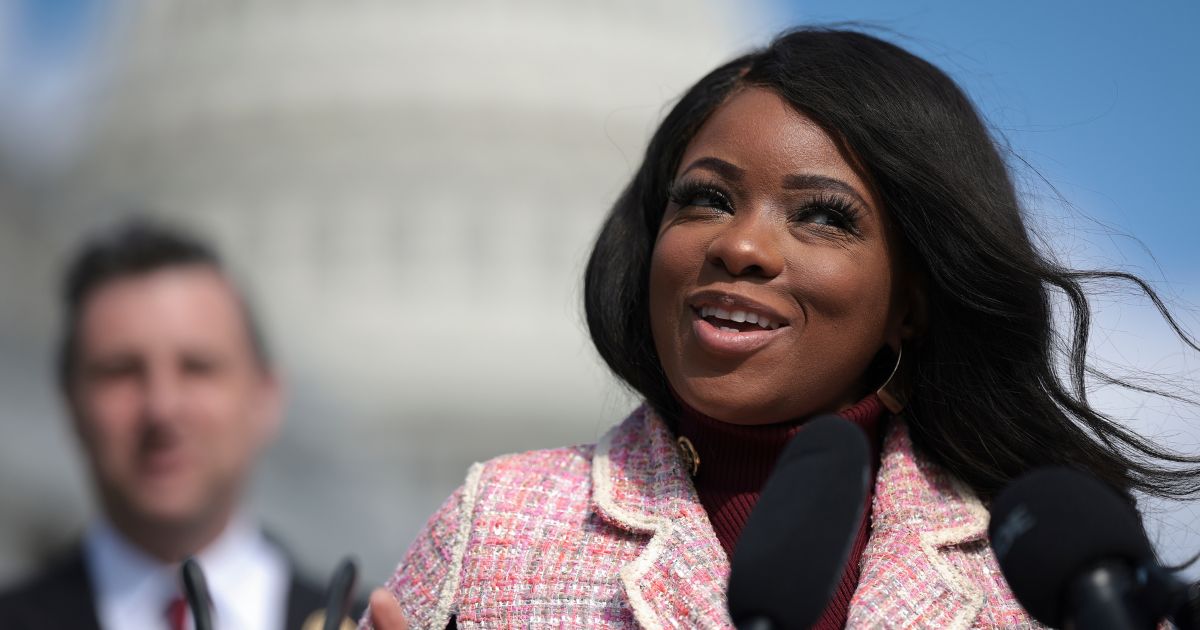Public schools hide huge sex abuse scandal
For two decades, the government neglected to update on child sexual abuse in public schools, despite alarming statistics revealing 9.6% of students facing misconduct by school staff. Unlike other scandals, public attention and reforms were lacking, highlighting a disturbing disparity in addressing child abuse compared to adult misconduct, raising concerns over underreporting and inadequate accountability.
It’s always interesting to notice what kind of data the government tracks, and what kind of data gets completely ignored.
Every couple of years, for example, we get something called a “National Climate Assessment.” If the sea level rises by a millimeter off the Oregon coast, you’ll know about it. We also receive regular government reports on the number of women who decide to take STEM classes and the popularity of nonbinary and pansexual gender identities in places like Honduras.
What we haven’t received, for two decades, is a comprehensive update from the government on the number of children who are sexually abused in public schools. It was all the way back in 2004 that the Department of Education released a report finding that, between kindergarten and 12th grade, 9.6% of students nationwide were subjected to sexual misconduct by a school employee. That’s one in ten students, totaling more than 5 million child victims in the system at any given time. Teachers, coaches, and bus drivers were the most common offenders.
A finding like that should have led to a national outcry and immediate changes. And indeed, the Department of Education’s report recommended several new policies for screening employees and standardizing policies to make these kinds of incidents easier to report and keep track of. But that never happened. And the federal government has barely shown any interest in the topic in the 20 years since.
There certainly was no broader cultural reaction to the Department of Education’s report, either. And that’s a big contrast to other scandals involving systemic sexual abuse.
A decade ago, a popular film called “Spotlight” dramatized the work of investigative journalists at the Boston Globe. The journalists discovered a cover-up of child sex abuse in the Catholic Church, and they won a Pulitzer for their reporting — back when winning a Pulitzer actually meant something. And then the movie about those journalists was nominated for six Academy Awards and won two. Of course, the Catholic Church scandal received significant attention far beyond that movie and the Boston Globe.
A few years later, we got a bunch of “Me Too”-themed movies that no one even wanted, including “She Said” and “Bombshell.” Adult women in Hollywood were victims of pervasive abuse, we were told, and it needed to end. In many cases that was true. And the public outcry in defense of the female victims of sexual misconduct in Hollywood was also immense. Everyone seemed to care. A lot.
But again, there’s been no equivalent movement to end the sexual assault of children in schools — particularly public schools, where most of the abuse happens (with the help of our tax money). Why would the sexual abuse of adult women in Hollywood receive so much attention, while the sexual abuse of children receives basically none?
WATCH: The Matt Walsh Show
Every so often for the past decade, I’ve done a monologue or written a piece asking this question — when exactly will the movement to end this child sex abuse epidemic arrive? I’ve wondered when the public will start to care even a little bit about the rampant sex abuse scandal in the public school system — you know, the place where 50 million American children spend the majority of their formative years. So far, the answer has been “not yet” — even though every other day, we’re hearing about another child who’s been sexually abused by a teacher.
Here’s just the latest example, from earlier this week:
Here’s one of the text messages:
One of my cousins is in the 5th grade, and I can’t imagine a man talking to her how we talk. I know we have a special relationship, and I do love you more than anyone in the world, but I have to be the adult here and stop.
Those are her words to a kid who would be 10- or 11-years-old. Apparently, this woman got the child’s phone number after the family invited her to go on vacation with them — the same month she got engaged to her boyfriend.
There are so many stories like this, just this year, and even the past month, that it’s impossible to cover all of them in this show. Even if I spent the whole hour on it, I couldn’t do it. But I will go through some of them because it’s important to understand the scale of the problem. For example, just a couple of days ago in Gatesville, Texas, a teacher was arrested for sending sexually explicit messages to a 15-year-old student. Watch:
This is an 8th-grade teacher — who appears to be old enough to be a grandmother — who was allegedly propositioning children for sex using Instagram direct messages, and asking them to send her pictures of their genitals. She also sent nude pictures of herself, according to police. And the charges are actually worse than what you just heard in the video. One of the charges she’s now facing includes possession of child pornography with intent to distribute.
As of now, this teacher hasn’t been accused of physical sexual assault of children, but we’ll see what the investigation turns up as it continues. There are plenty other recent examples of physical abuse happening, though.
Three weeks ago in Omaha, for example, police said they caught a 45-year-old married substitute teacher in her car having sex with a 17-year-old student. Here’s that story:
In this case, after the police showed up, the student apparently got in the driver’s seat of the Honda Pilot, half naked, and crashed it before hiding from police for an hour.
You’ll hear from some corners of the internet that this kind of sexual abuse is no big deal because 17 is considered legally old enough to consent to sexual activity in some states, including Nebraska. They’ll say it’s a “victimless” crime, even though none of the people saying that would want their son or daughter to be found having sex with a middle-aged teacher in the backseat of a Honda Pilot on a dead-end road at 3:00 a.m. Further, we should note, many of the victims in systemic sexual abuse scandals that have attracted widespread attention have been even older than 17.
Again, the Me Too movement began because of the experiences of mostly adult actresses — many of whom willingly had sex with male producers in order to procure film roles. That was seen as a major national scandal, but this sort of thing isn’t? How so? And yet this dismissive attitude has led to so much underreporting of teacher sex abuse in schools. And we can measure that.
Business Insider, of all places, just published an in-depth expose of decades worth of sex abuse accusations at one school — Rosemead High School in Los Angeles. There won’t be any “Spotlight”-style movie treatment of Business Insider’s report, of course. But, credit where it’s due: it’s worth reading in its entirety. The report shows, among other things, how often parents are reluctant to call authorities to report inappropriate behavior in schools, even when it’s right in front of them. They don’t want to be seen as challenging school officials, for whatever reason. And schools are all too happy to take advantage of this. On the relatively rare occasions that they do receive complaints, schools often cover them up. In Los Angeles, at one school, that went on for decades, as nearly two dozen victims piled up.
Another excuse I’ve heard to explain why the sex abuse epidemic in schools isn’t treated as a major scandal is that, supposedly, the perpetrators are being arrested, prosecuted, and convicted. There is no cover up. But that’s not true. That’s a lie. You don’t get thousands of abusers in your system without cover-ups. If there was a habit of smoking these people out and holding them accountable, you wouldn’t end up with 5 million abused kids in the system, obviously.
These cover-ups happen all the time and are happening right now, all over the country.
As FOX-9 in Minneapolis found just this week, in response to allegations of sexual misconduct concerning teachers, schools can choose not to renew teachers’ contracts instead of firing them outright. That avoids all of their legal reporting obligations.from the FOX-9 from just a couple of days ago:
When a former teacher was charged with having sex with a student earlier this year, police records indicated he had already been fired from a St. Paul charter school. But he wasn’t. Personnel records obtained by the FOX 9 investigators reveal Brandon Bunney was not actually terminated by the Hmong College Preparatory Academy. Instead, his teaching contract was ‘rescinded’ last May after a staff member alerted school leadership about boundary concerns with a student. Had Bunney been terminated, the school would have been legally required to report him to the state teaching board that decides which teachers are allowed in a classroom. But that didn’t happen because Bunney wasn’t technically fired.
This is how most jurisdictions handle child sex abuse in schools. They do what the Catholic Church did in many cases. They shuffle the abuser to another school without telling anyone, just as abuser priests were shipped from one diocese to another — for the same reason. And even when the teachers are punished, in many cases, they aren’t punished to any significant degree.
In March, a 9th-grade teacher in Lincoln, Nebraska — who had sex with a student ten times — was just sentenced to probation plus 90 days in jail. That’s it.
Late last year, a 48-year-old teacher who had sex with a 15-year-old student was sentenced to three years’ probation with no jail time at all. The teacher doesn’t even have to register as a sex offender. By the way, if you think that this light treatment is because the abusers in the public school system are often women, it’s actually not that simple. The 48-year-old predator in that case was a man.
One of the few jurisdictions that actually takes this kind of abuse seriously is Florida. Here’s a report from Hillsborough County, from just two weeks ago.
“He’s facing mandatory life imprisonment.” That should be the norm in every single one of these schools, K-through-12, where a teacher sexually abuses a child. But it’s not. That’s why you keep hearing so many of these stories. Every video I’ve shown you has been from the past month. That’s how common this is. There are dozens of these stories every month, it seems.
And of course, those are just a small fraction of the sexual misconduct cases that get reported. So you have to ask: Has anything changed since the Department of Education’s report in 2004, finding that ten percent of children are abused in schools? Has the problem gotten even worse? It seems that way. Again, the government doesn’t seem interested in finding out.
But within the past year, a nonprofit called the Defense of Freedom Institute conducted its own investigation into the data from public schools. They analyzed various reporting numbers that the government makes available, but only if you know where to look. Here’s what they found:
Between 2010 and 2019, the number of complaints filed with the U.S. Department of Education’s Office for Civil Rights (OCR) alleging sexual violence against K–12 schools more than tripled.
I’m going to stop there because it bears repeating. The number of alleged instances of sexual violence in public schools has more than tripled in the past decade. It has not gone down. It has not stayed the same. It has dramatically increased.
And we’re not just talking about inappropriate communications here. The report continues:
For 2015–16, the [Civil Rights Data Collection] reported 9,649 incidents of sexual violence; of that number, 394 constituted instances of rape or attempted rape. For 2017–18, the numbers were 13,799 and 685, respectively—an increase of 43 percent and 74 percent.
The report goes on to find that “local teacher unions” often work to conceal sexual abuse by permitting employees to resign — which is the same practice that FOX-9 discovered this week in Minnesota:
Unions use collective bargaining and nondisclosure agreements to conceal the records of abusive employees, and union leaders wield their powerful influence in many state legislatures to stymie legislation.
The solution, as outlined by the Defense of Freedom Institute, is as straightforward as it was in 2004. Congress should require local education agencies (and school districts) to catalogue and report all school-level data on sexual abuse and violent crimes. Any school district or local education agency that conceals these crimes — or allegations concerning these crimes — should lose federal funding immediately, for starters.
But Congress has shown no interest in passing a law like that, because there has been no national campaign about child sex abuse in schools. Certainly, there’s been nothing on the level of the Me Too movement, or the coverage of the Catholic priest sex abuse scandal.
To be clear, as much as I’ve talked about the many excesses of the Me Too movement, it’s good that the predators in those institutions have been exposed and — to some limited extent at least — brought to justice. But it boggles my mind that widespread sexual predation in the public school system — a system millions of parents entrust their children to — has not attracted even a fraction of the interest or the outrage. The only way to prevent even more children from being abused is to change that as quickly as possible.
" Conservative News Daily does not always share or support the views and opinions expressed here; they are just those of the writer."





